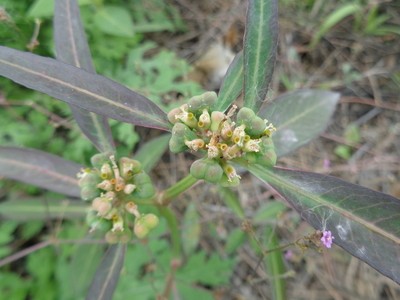Desert poinsettia
(Euphorbia terracina)

Description
Euphorbia heterophylla, also known under the common names of (Mexican) fireplant, painted euphorbia, Japanese poinsettia, desert poinsettia, wild poinsettia, fire on the mountain, paintedleaf, painted spurge, milkweed, and kaliko plant, is a plant belonging to the Euphorbiaceae or spurge family. Euphorbia heterophylla is native to tropical and subtropical America but is now widespread throughout the tropics. Many herbicides fail to control it and hence it has spread rapidly in many parts of the world. This plant has been introduced to South and Southeast Asia as an ornamental plant, having become a weed in India and Thailand, where it has invaded cotton fields and other agricultural terrain. Euphorbia heterophylla grows between 30 and 100 cm tall and has hollow stems that may be branched or simple with angular ribs. The leaves of the plant have variable shapes within and between populations. The lower leaves are alternate whereas the upper leaves are opposite and commonly have a whitish or bright red base. Within 30 days of emergence the plant may flower with ripe seeds being formed between 25 and 30 days later. It is pollinated by insects which are attracted to large amounts of nectar the plant produces. The stalk exudes a toxic milky white latex. The cyathia or false flowers, are located in clusters at the head of the stalk and are yellowish green. They have no petals, the red color being part of the young leaves' coloration. The fruits are small, segmented capsules. When the fruits are mature, they explode and shoot the seeds some distance from the parent plant allowing the plant to disperse. This plant often loses its coloration when it grows wild as a weed. There are populations that have been identified to have resistance to specific herbicides in South America. The plants are annual, biennial or perennial herbs, woody shrubs, or trees with a caustic, poisonous milky latex. The roots are fine or thick and fleshy or tuberous. Many species are more or less succulent, thorny, or unarmed. The main stem and mostly also the side arms of the succulent species are thick and fleshy, 15–91 cm (6–36 in) tall. The deciduous leaves may be opposite, alternate, or in whorls. In succulent species, the leaves are mostly small and short-lived. The stipules are mostly small, partly transformed into spines or glands, or missing.
Taxonomic tree:







